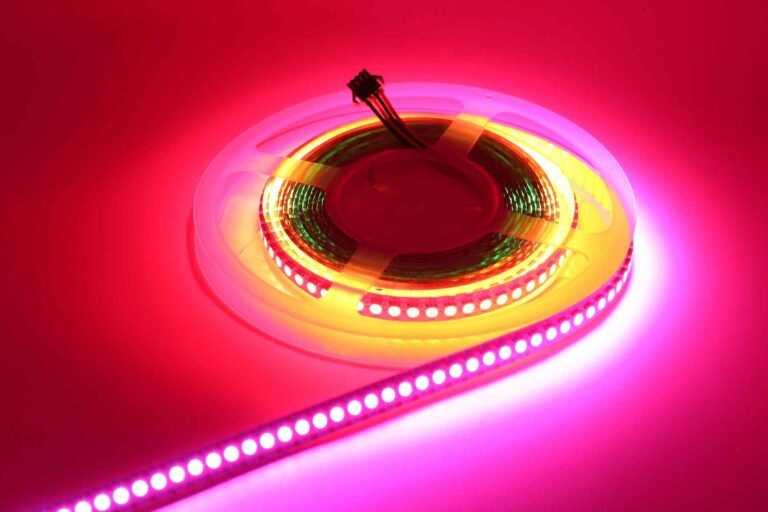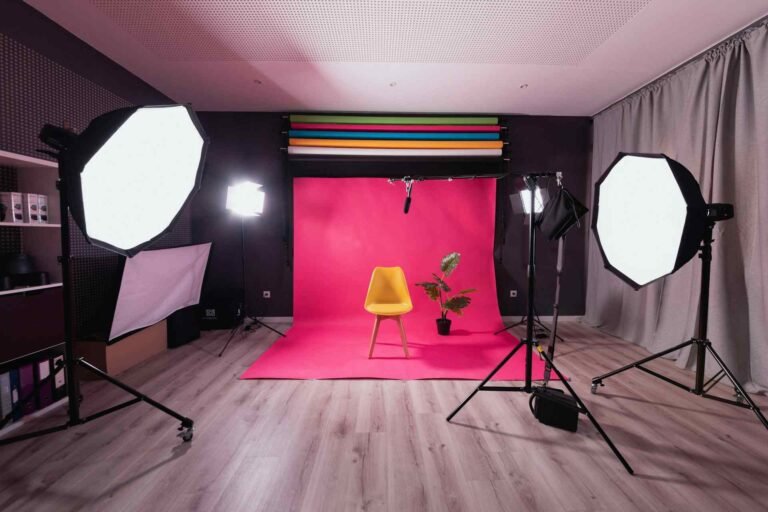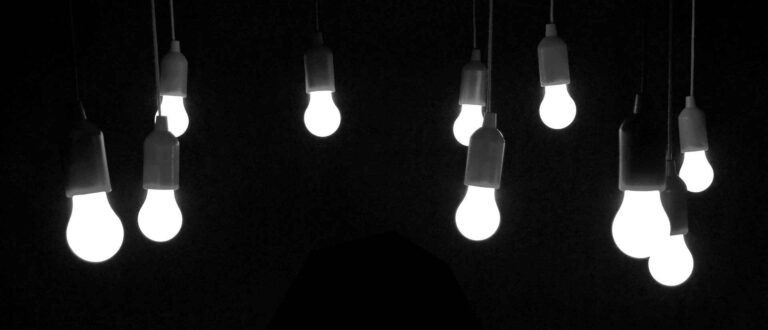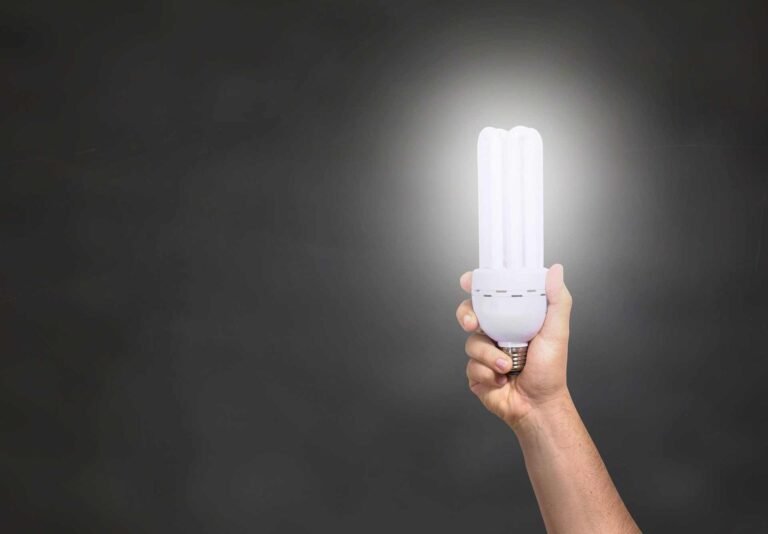What Is Color Rendering Index? Why CRI Matters for Your LED Lights
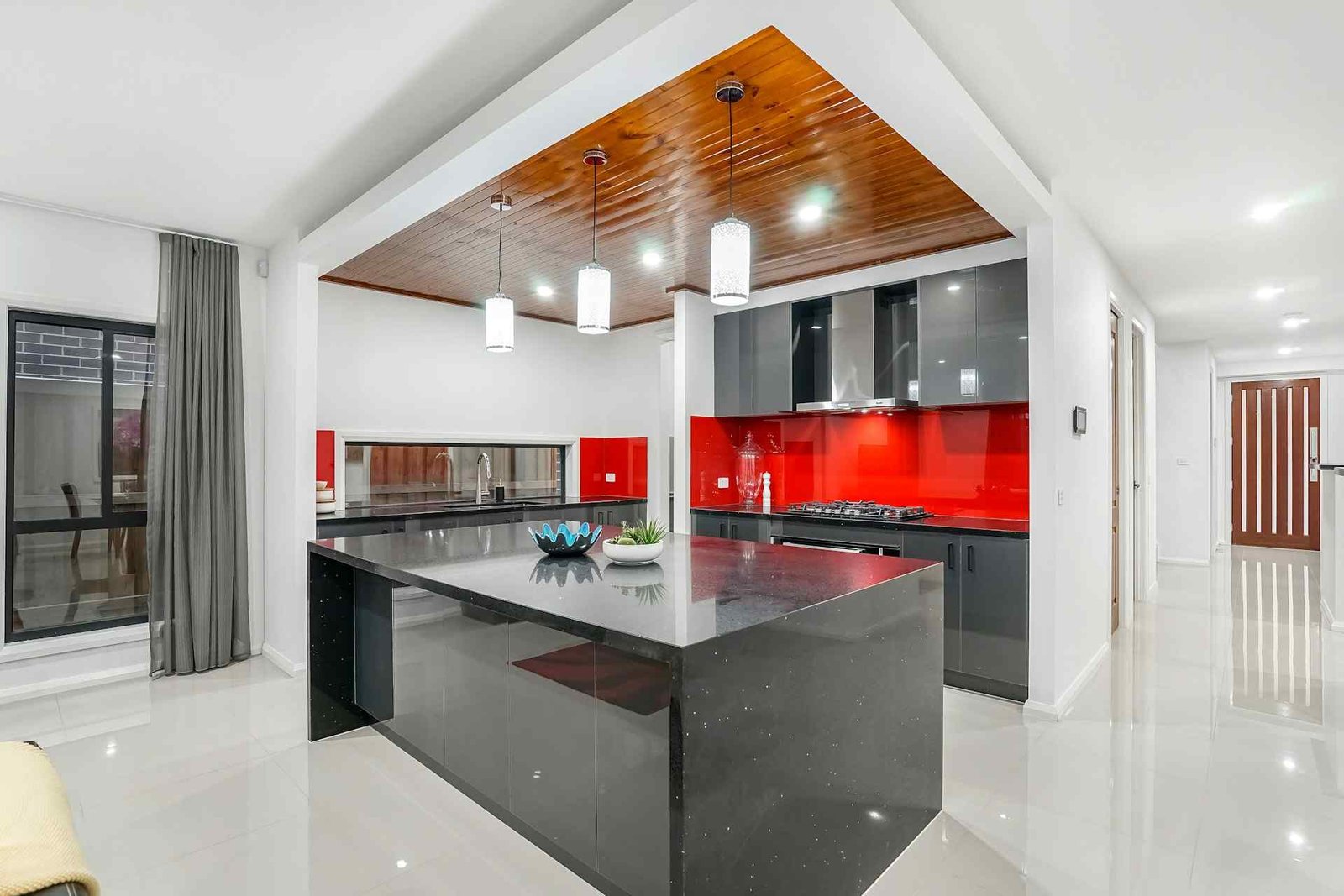
Ever notice how that vibrant red shirt looks completely different under your desk lamp compared to natural sunlight? Or how your carefully chosen wall paint seems to shift colors throughout the day? Welcome to the fascinating world of color rendering, where not all light is created equal.
The culprit behind these color mysteries is something called the Color Rendering Index, or CRI for short. While it might sound like technical jargon reserved for lighting engineers, understanding what color rendering index means can transform how you choose lighting for your workspace and home. Trust us, once you grasp this concept, you’ll never look at light bulbs the same way again.
Understanding the Color Rendering Index
So, what is color rendering index exactly? Think of CRI as a report card for light sources, measuring how accurately they reveal the true colors of objects compared to natural sunlight. The color rendering index uses a scale from 0 to 100, where 100 represents perfect color reproduction, just like stepping outside on a sunny day.
When we talk about what cri is, we’re essentially discussing how faithful a light source is to reality. A light with a CRI of 90+ will make your morning coffee mug look almost identical to how it appears in daylight, while a light with a CRI of 60 might make that same mug look dull or slightly off-color.
The magic happens because different light sources emit varying combinations of colors across the spectrum. Natural sunlight contains a rich, balanced mix of all colors, which is why everything looks so vivid outdoors. Artificial lights, however, often have gaps or peaks in their spectral output, creating those color distortions we’ve all experienced.
How LED Lights Handle Color Rendering
The color rendering index of LED lights has become increasingly important as we’ve moved away from traditional incandescent bulbs. Early LED technology was notorious for poor color reproduction, often giving everything a cold, sterile appearance that made spaces feel uninviting.
Modern LED color rendering index ratings have improved dramatically, with many quality LEDs now achieving CRI scores of 80 or higher. The best CRI LED lights can reach scores of 95 or even higher, rivaling the color accuracy of traditional incandescent bulbs while maintaining all the energy efficiency benefits we love about LEDs.
What makes CRI LED technology particularly interesting is how manufacturers achieve these high scores. Unlike incandescent bulbs that naturally produce a continuous spectrum, LEDs create light by combining different colored chips or phosphor coatings. The challenge lies in balancing these elements to create a spectrum that closely mimics natural light.
For desk lighting enthusiasts, this technological evolution means you can now enjoy USB powered desk lights that don’t compromise on color quality. Many modern LED desk lamps boast CRI ratings of 85 or higher, ensuring your workspace looks natural and comfortable throughout long work sessions.
Why CRI Matters in Your Daily Life
You might wonder why you should care about what cri rating is when shopping for lights. The answer lies in how color accuracy affects everything from productivity to mood to the simple pleasure of seeing your surroundings as they’re meant to be seen.
In workspace environments, poor CRI lighting can cause eye strain and fatigue. When your brain constantly works to interpret colors that don’t look quite right, it creates subtle stress that accumulates throughout the day. High CRI lighting reduces this cognitive load, making extended work sessions more comfortable and potentially more productive.

The psychological impact extends beyond comfort. Colors influence our emotions and energy levels in profound ways. A warm yellow that looks inviting under high-CRI lighting might appear sickly green under poor-quality illumination, completely changing the atmosphere of a room.
For those working with visual content, whether it’s graphic design, photo editing, or simply reviewing documents with colored charts, accurate color rendering becomes crucial. Poor CRI can lead to incorrect color decisions that only become apparent when viewed under different lighting conditions.
Decoding CRI Ratings and What They Mean
Understanding cri numbers helps you make informed lighting choices. Here’s how the ratings typically break down:
Excellent (90-100 CRI): These lights reproduce colors with exceptional accuracy, suitable for tasks requiring precise color judgment. Think art studios, photography work, or simply creating the most natural-looking environment possible.
Good (80-89 CRI): This range offers solid color reproduction for most general applications. Colors appear natural and pleasing, making this range perfect for offices, living spaces, and most commercial applications.
Fair (70-79 CRI): Colors may appear slightly muted or shifted, but still acceptable for many situations. You might find this range in budget lighting or specialized applications where color accuracy isn’t the primary concern.
Poor (Below 70 CRI): Colors can appear significantly distorted, flat, or unnatural. While these lights might serve functional purposes, they create uncomfortable environments for extended use.
When evaluating CRI lighting options, remember that higher isn’t always necessary. A reading lamp with a CRI of 85 will serve most people perfectly well, while paying extra for a 95 CRI rating might be overkill unless you’re doing color-critical work.
CRI in Different Lighting Applications
Different spaces and activities benefit from varying CRI levels. Cool light vs warm light considerations often go hand-in-hand with CRI decisions, as both factors influence how comfortable and functional your lighting feels.
For general workspace lighting, aim for CRI ratings of 80 or higher. This ensures documents, screens, and office materials appear natural without requiring premium color accuracy. Many dimmable LED desk lamps in this range offer excellent versatility for different tasks throughout the day.
Task lighting demands higher standards. If you’re doing detailed work, reading for extended periods, or working with colored materials, consider lights with CRI ratings of 90 or above. The investment in higher-quality lighting pays dividends in reduced eye strain and improved accuracy.
Motion sensing table lamps and automated lighting systems benefit from good CRI ratings since they often serve multiple functions throughout the day. A motion-activated light with poor color rendering might be jarring when it activates, while high-CRI versions create smoother transitions.
For video calls and photography, CRI becomes particularly important. Desk lamps for video calls with high CRI ratings ensure your skin tone appears natural on camera, while poor CRI can create unflattering color casts that no amount of camera adjustment can fully correct.
The Science Behind Color Temperature and CRI
Color temperature and CRI work together but measure different aspects of light quality. While color temperature describes whether light appears warm (yellowish) or cool (bluish), CRI measures how accurately that light reveals colors regardless of its temperature.
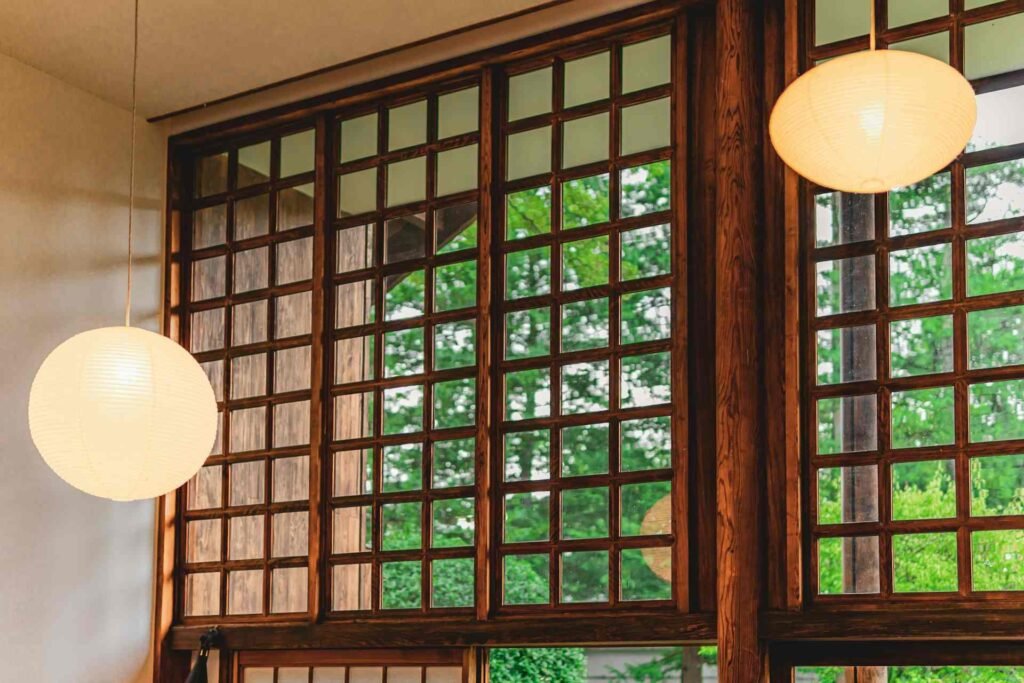
A warm 3000K light and a cool 6000K light can both have identical CRI ratings of 90, meaning they’ll both render colors accurately within their respective color temperatures. The warm light will make reds and oranges appear more vibrant, while the cool light will enhance blues and greens, but both will show colors truthfully. You want fixtures that maintain high CRI across their entire range of color temperatures, ensuring consistent color accuracy whether you’re using warm evening lighting or bright daytime illumination.
Common CRI Myths and Misconceptions
One persistent myth suggests that higher CRI always means better light quality. While high CRI is generally desirable, it’s not the only factor determining whether a light is pleasant to use. A light with perfect 100 CRI that flickers or creates harsh shadows might be far less comfortable than a well-designed 85 CRI fixture.
Another misconception is that all LED lights have poor CRI. While early LEDs deserved this reputation, modern LED technology routinely achieves CRI ratings that exceed traditional lighting sources. Quality LED lights now offer both convenience and excellent color rendering.
Some people believe CRI only matters for professional applications. In reality, even subtle improvements in color rendering can enhance daily life. The difference between 70 CRI and 85 CRI might seem small on paper, but it’s immediately noticeable in how vibrant and natural your environment appears.
Making Smart CRI Choices for Your Space
When shopping for lighting, CRI should be one of several factors in your decision matrix, alongside brightness, color temperature, energy efficiency, and design. For most applications, targeting CRI ratings between 80-90 provides the best balance of color quality and value.
Consider your specific needs when evaluating how many lumens you need for a desk lamp alongside CRI requirements. A bright light with poor color rendering can be more fatiguing than a dimmer light with excellent CRI, especially for close-up work.
Pay attention to how different lighting technologies handle CRI. While LED technology dominates the market, the quality can vary significantly between manufacturers. Look for products that specifically advertise their CRI ratings, as companies proud of their color rendering typically highlight this specification.
The Future of Color Rendering Technology
LED technology continues advancing, with newer developments like quantum dot LEDs and improved phosphor formulations pushing CRI ratings even higher while maintaining energy efficiency. Some premium LEDs now achieve CRI ratings above 95 while still offering the long lifespan and low energy consumption we expect from solid-state lighting.
Tunable white LEDs represent another exciting development, allowing users to adjust both color temperature and maintain high CRI across the entire range. This technology is making its way into consumer products, offering unprecedented control over lighting quality.
Smart lighting systems are beginning to incorporate CRI considerations into their automatic adjustments, recognizing that optimal lighting involves more than just brightness and color temperature. Future systems might automatically optimize CRI based on the time of day, activity, or even the colors present in a room.
Frequently Asked Questions
What is a good CRI rating for home lighting?
For most home applications, a CRI rating between 80-90 provides excellent color rendering that makes spaces feel natural and comfortable. This range offers a good balance between color quality and cost, ensuring your home looks vibrant without requiring professional-grade lighting specifications.
Does CRI affect energy efficiency in LED lights?
CRI doesn’t directly impact energy efficiency, but achieving higher CRI ratings often requires more sophisticated LED designs or additional components. This can slightly increase manufacturing costs but typically doesn’t significantly affect power consumption. Modern high-CRI LEDs remain highly energy-efficient compared to traditional lighting sources.
Can you see the difference between 80 CRI and 90 CRI?
Most people can notice the difference between 80 CRI and 90 CRI when comparing lights side by side, especially when looking at colorful objects or skin tones. The 90 CRI light typically makes colors appear more vibrant and natural. However, the difference might not be immediately obvious if you’re only exposed to one light at a time.
Why do some LED lights make colors look weird?
LEDs with low CRI ratings or poor spectral quality can make colors appear distorted because they don’t emit a balanced spectrum of light. Some early or low-quality LEDs have gaps in their color output, particularly in reds or specific color ranges, which causes objects to appear different from how they look under natural sunlight.
Is 100 CRI always the best choice?
While 100 CRI represents perfect color rendering, it’s not always necessary or practical. Lights with 85-95 CRI often provide excellent color quality for most applications at a more reasonable cost. The difference between 95 CRI and 100 CRI is typically negligible for everyday use, making the highest ratings primarily valuable for specialized color-critical applications.
Conclusion
Who knew that three little letters could make such a big difference in how we see the world around us? The Color Rendering Index might have started as a technical specification, but it’s really about something much more fundamental: seeing colors as they’re meant to be seen.
Whether you’re setting up the perfect workspace with properly positioned desk lighting or simply want your home to feel more welcoming, understanding CRI empowers you to make lighting choices that enhance rather than compromise your daily experiences.
The next time you’re shopping for lights and see those CRI numbers, you’ll know you’re looking at a measurement of truth in lighting. And in a world where we spend so much time under artificial illumination, a little more truth can make all the difference between a space that feels sterile and one that feels like home.
Looking for more? Check out our desk lighting category for more articles and guides that may interest you!
Featured image credit: Photo by OS Media on Unsplash
This content is for informational purposes only. Please verify current information directly on the retailer’s site before purchasing.


